Pre-Mat should issue spoiler alert for new dental, medical students
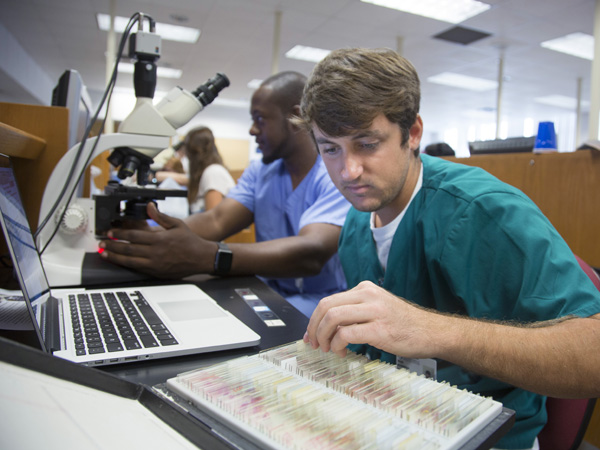
If getting through medical school or dental school is like a mystery that must be solved, then Kandice Bailey and Brian McDonnieal have already discovered a great big clue.
Several clues, in fact. Bailey, a future M.D., and McDonnieal, a future D.M.D., are among the 20 or so students taking advantage of UMMC's Pre-Matriculation program this summer - six weeks of preparatory courses designed to drain some of the suspense from their first year in professional school.
Once they officially matriculate, in August, their investigations into the secrets of biochemistry, histology and Gross Anatomy will be less like whodunits and more like been-there-done-that.
That is the plan, at least, and it seems to be working.
“It's already benefitted me,” McDonnieal said as his first week in Pre-Mat wound up earlier this month. “It was a deal I wasn't going to pass up.
“Already, I believe I'm exponentially more prepared than I would have been without it. And it's only been 4 ½ days.”
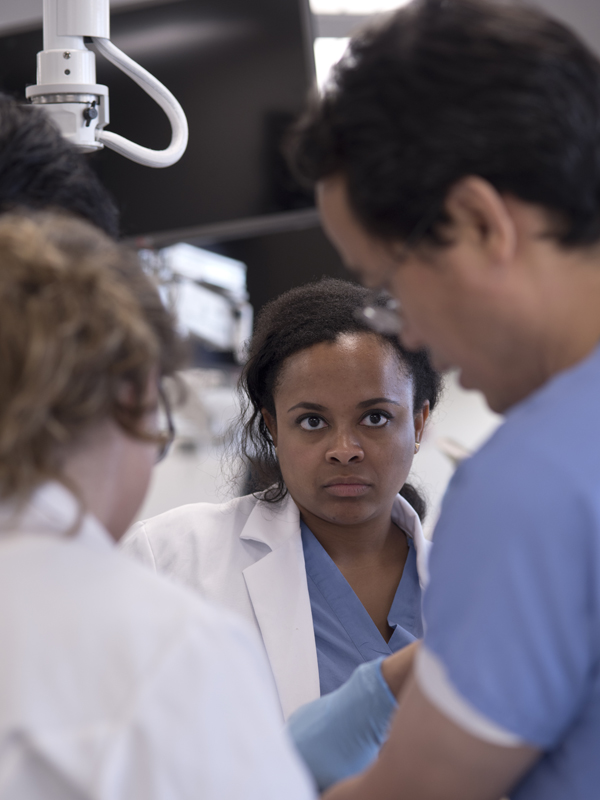
“We all walked into the lab with these big eyes,” she said a few days after entering Pre-Mat. “I just kind of swallowed my nerves and said, 'You've got to do this.'
“It's a great dose of reality - one day it is going to be a breathing person I'm seeing.”
Formally known as the Pre-Matriculation Summer Educational Enrichment Program, Pre-Mat has served more than 1,000 students at the Medical Center, said Dr. Gaarmel Funches, director of community education outreach.
The initiative, with facilities provided through the support of Dr. Michael Lehman, professor and chair of the Department of Neurobiology and Anatomical Sciences, has room each summer for up to 50 students.
Begun at UMMC in 1979 with federal funds from what is now the Department of Health and Human Services, it has always been available to underserved and underrepresented dental and medical students and to those who apply in hopes of improving their competitiveness, Funches said.
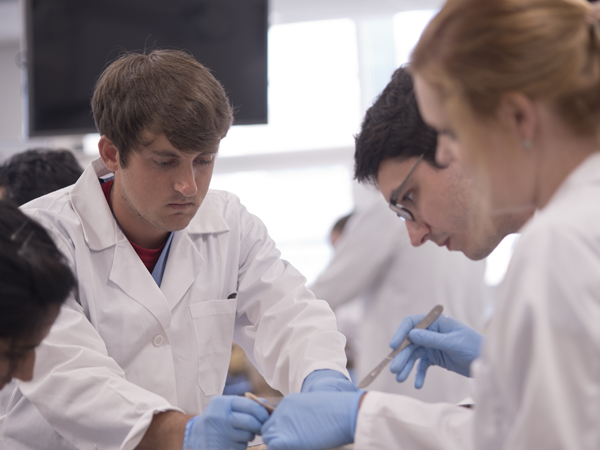
But preference is given to those referred by their respective admissions committees and, as is true for Bailey and McDonnieal, recipients of a Mississippi Rural Physicians Scholarship - or, in McDonnieal's case, a Rural Dentists Scholarship.
Both students are from small towns and/or small colleges.
McDonnieal grew up in Corinth and earned a cross-country track scholarship to attend Blue Mountain College, located in the Blue Mountain community near Tupelo.
“It's a great school, academically challenging; but I didn't want any distractions from my studies,” he said, “and about the only distraction there is making a McDonald's run.”
He will be the first dentist in his family, an aspiration that blossomed when he was 17, after just one morning spent shadowing a real one.
“Before I knew it, it was lunch time, and it seemed like I had been there only an hour,” he said. “It was so much fun. I knew that's what I wanted to do the rest of my life.”
For her part, Bailey, a Millsaps College graduate, was brought up in Lorman. “Super rural; our family raised cows,” she said.
The family also brought up a physician - Dr. Summer Bailey, now a UMMC first-year resident in Obstetrics and Gynecology, and, like her younger and only sibling, a Rural Physicians Scholar and partaker of Pre-Mat.
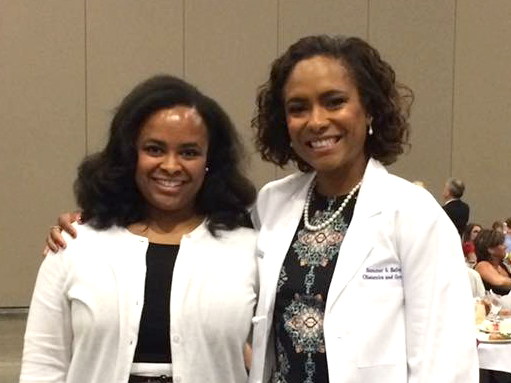
“Pre-Mat is like a six-week head start,” Summer Bailey said.
She and Kandice had another kind of head start as well - seeing after the man they call their “first patient” long before either entered medical school.
“I gave him insulin injections, made sure his medicines were correct, and checked on him during the day,” Summer Bailey said.
“He was the first patient I learned how to check manual blood pressures with and the first patient I performed a physical exam on. Some mornings, I would help clean and dress him for the day and help him with his meals.
“He told the funniest stories, and he always told me that I was doing a great job.”
Kandice Bailey had a similar experience with this same man - their grandfather - until he passed away in August of last year.
“To him, we were 'the prettiest, smartest girls walking around,'” Kandice Bailey said. “He was an amazing grandfather. He piqued our decision to become physicians.”
For Summer Bailey, that decision became easier when she discovered the Pre-Mat program. “From the first day, those of us who had taken it were ready for that initial shock - in the Gross Lab, mainly,” she said. “We already knew how to study in there.”
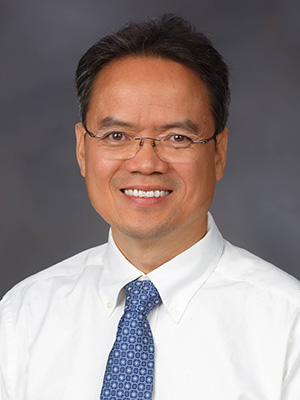
Unlike the medical school's fall course in Gross Anatomy, the Pre-Mat version requires students to be in the lab every day, said Dr. Yuefeng Lu, assistant professor of neurobiology and anatomical sciences, and course director of Pre-Mat Gross Anatomy.
“The intensity is comparable to the fall; actually, it's harder because they're learning every day,” he said. As in the other two Pre-Mat courses, there's no break during the program that ends, for the summer, on July 15.
The main difference is that Pre-Mat students cover only two, rather than four, sections, or “blocks” - the first, the back/upper limbs; and the fourth, or last, the head and neck.
“The last block is the most difficult one,” Lu said. “The first block in the summer is the first one medical students take in the fall. So they have that confidence going in.”
Lu has written a study about the impact Pre-Mat Gross Anatomy has made on student performance, finding that “summer participants performed either at or above the class average for Block 1 and 4 exams.” Their grades did not show any improvement for the other two block exams.
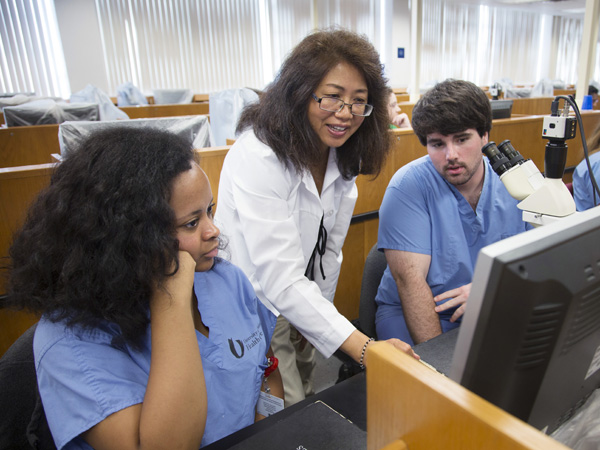
Pre-Mat students also did better on practical exams, but tended to do less well on written tests. The grades recorded in Pre-Mat Gross Anatomy, he wrote, “should be used as a reliable predictor to provide early help to at-risk students.”
His findings provide “solid evidence to justify the time and resources put into the program,” Lu concluded.
In the beginning, Gross Anatomy was one of only two Pre-Mat courses offered at UMMC.
“Studies at that time showed that not many schools offered biochemistry and definitely not Gross Anatomy,” Funches said. “We offered them to give students a better chance at success in professional school.”
Dr. LaMonica Davis Taylor jumped at that chance.
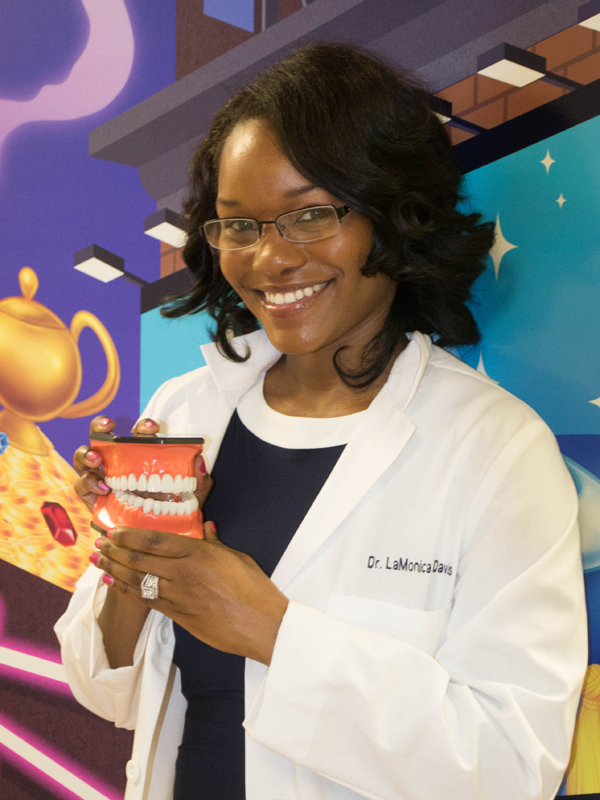
“One reason I did was so I wouldn't be shocked by Gross Anatomy my first day in dental school,” said Taylor, UMMC clinical assistant professor and a private-practice pediatric dentist in Jackson.
“Pre-Mat was such a great program; I was ahead of most of my dental school classmates. The instructors didn't cut any corners. I also found it was valuable to be with medical students as well as dental students. I learned new ways to study and stay focused.”
Biochemistry, the other original Pre-Mat course, is taught by Dr. Clinton Bailey, affiliate faculty member who chairs Mississippi Colleges' Department of Chemistry and Biochemistry.
When he joined the Pre-Mat faculty, in 2006, “a majority of the students had limited exposure to biochemistry,” he said. With new admissions requirements now, about 90 percent have had at least one semester in college.
Still, he believes his course “helps prepare students for the academic demands of medical and dental school.”
About four or five years ago, at the request of surveyed students, Pre-Mat added histology, which has been taught ever since by Dr. Dongmei Cui, assistant professor of neurobiology and anatomical sciences.
“Initially, the course was designed to help students who haven't studied histology before,” she said. “But … over the years, I have seen more students who had already taken histology, but are still willing to take this opportunity to review course materials in the summer.”
In her lab, where students pair off behind microscopes, plastic red drinking cups resembling emergency sirens pop up frequently at their carrels - S.O.S. signals that Cui gladly answers.
“I really enjoy teaching in these small groups,” she said.
Kandice Bailey and McDonnieal enjoy learning in them, they said. In the fall, their groups will tend to be much larger; on certain days in the Gross Anatomy lab, for instance, the group will be about seven times larger for medical students.
And, while many students of every stripe and ambition prefer to take a long break before being tested by the rigors of professional school, Kandice Bailey and McDonnieal say that spending most of this summer in class will help them become acclimated academically, not to mention, socially.
I'm taking Pre-Mat to be ready for medical school as best as I can be,” Kandice Bailey said, “and not to be overwhelmed or overstressed.
“Besides, it's nice to meet my classmates and make some friends early.”


